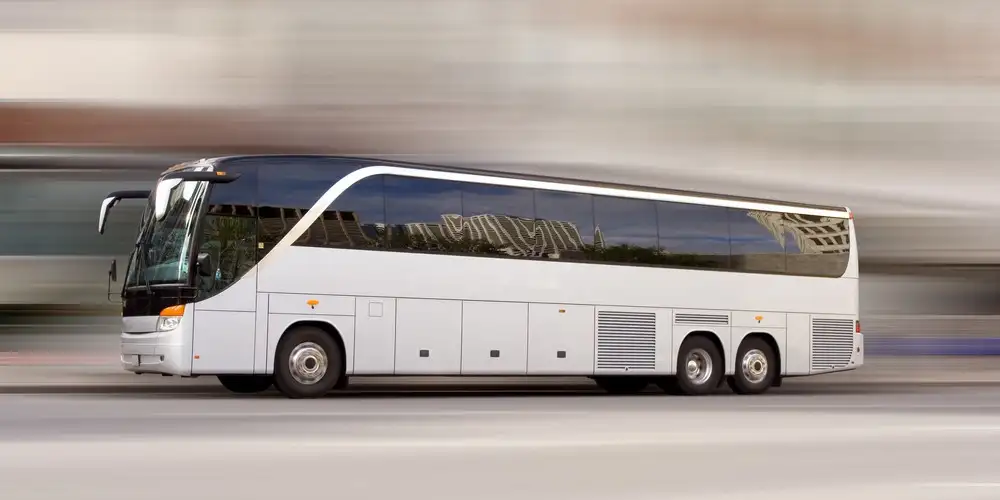
A month or so back, I was in Vancouver for a press showing, and on my return home I wanted to visit some cousins who live on Whidbey Island, north of Seattle. My plan was to rent a car, but a one-way car from Canada to the United States is a nonstarter. For Whidbey Island, the best place to rent a car would be at the Bellingham Airport, about 22 miles south of the international border. And although I had my usual anti-bus mind-set, the obvious way to get from Vancouver to the Bellingham airport was a bus. I found lots of bus trips, mainly serving the thousands of Vancouverites who flock to Bellingham for access to cheap flights to Hawaii, Las Vegas, and other tourist destinations on Allegiant, Alaska, and Frontier. And my successful—and uneventful—bus trip reminded me that bus travel is experiencing something of a renaissance in the U.S. and Canada.
The three largest nationwide bus operators, Greyhound, Trailways, and MegaBus, are performing the point-to-point short-haul service that the railroads performed in pre-Amtrak days. They provide relatively frequent service on routes that Amtrak either doesn’t serve at all or might, at best, serve once a day, often with extremely inconvenient departure/arrival hours. And they do it at surprisingly low fares. The best express buses, using the interstates, come close to Amtrak speeds. And when you factor in the hassles of airport access and security, bus speeds can match air on shorter route segments.
Greyhound, with its subsidiaries, remains the top dog in the US. It operates a handful of different service models, including:
- Regular Greyhound is the conventional, old-line unit, operating on major highways around the country. Compared with 10 years ago, today’s Greyhound is a bit more streamlined; it has eliminated a lot of small-traffic stops in the interests of increased speed. The equipment is standard: tight two-by-two seating with minimal legroom.
- Greyhound Express operates minimum-stop one-day routes from a handful of major U.S. cities. Speeds are better than regular Greyhound, plus the service features reserved seating, restrooms, onboard Wi-Fi, power outlets, and what Greyhound calls “extra” legroom.
- Subsidiary Bolt Bus operates economy services in limited areas of the Northeast and West.
Trailways is an umbrella organization covering more than 70 individual operating companies in 27 states. It provides conventional bus service, similar to Greyhound’s, mainly on routes Greyhound does not serve.
Megabus, like Greyhound, operates one-day limited stop service radiating from hubs in the East, Midwest, California, and eastern Canada to dozens of cities within 400 miles. Hyped promotional fares start at $5, but even last-minute prices are low. Megabus operates both double-decker and more conventional buses; both provide onboard restrooms, Wi-Fi, power outlets, and reserved seating.
A handful of smaller bus lines operate in the busy Boston-New York-Washington corridor, ranging from the minimal-service lines catering to ethnic markets to the Boston–New York LimoLiner featuring one-by-two seating, extra legroom, Wi-Fi, power outlets, entertainment, and restrooms.
Bus fares, for the most part, are less than airfares or Amtrak. Greyhound and Megabus use capacity-control pricing, with the first few seats starting at very low prices, when I checked for mid-September: $17 for Sacramento–Bakersfield on Greyhound Express ($45 on Amtrak), $5 for Chicago–Minneapolis on Megabus ($66 on Amtrak), and in the Northeast corridor, Boston–New York is $12 on Bolt bus, $79 on LimoLiner ($49 on Amtrak regional, $128 on Acela Express). Greyhound’s best fares are “web only,” advance purchase, and nonrefundable.
Bus lines do not fully duplicate the railroads’ former blanket coverage of local routes during the pre-jet, pre-interstate days. As an example, despite heavy automobile traffic and a handful of daily flights at very high fares, no bus line operates directly between San Francisco and either Medford or Eugene, Oregon. With the requisite changes, buses take about twice as long on those routes as driving. Nevertheless, buses fill an important component of the intercity transportation system. And the new express buses are reasonably fast, reasonably comfortable and reasonably priced.
Ed Perkins Seniors on the Go is copyright (c) 2014 Tribune Media Services, Inc.
You Might Also Like:
We hand-pick everything we recommend and select items through testing and reviews. Some products are sent to us free of charge with no incentive to offer a favorable review. We offer our unbiased opinions and do not accept compensation to review products. All items are in stock and prices are accurate at the time of publication. If you buy something through our links, we may earn a commission.
Related
Top Fares From
Today's Top Travel Deals
Brought to you by ShermansTravel
France: 8-Night Paris, Avignon & Nice...
Infinity Worldwide Vacations
 vacation
$2880+
vacation
$2880+
Poconos: 3 Nts in Garden of...
ResortsAndLodges.com
 hotel
$305+
hotel
$305+
7-Nt Canada & New England Cruise,...
Princess Cruises
 cruise
$839+
cruise
$839+



